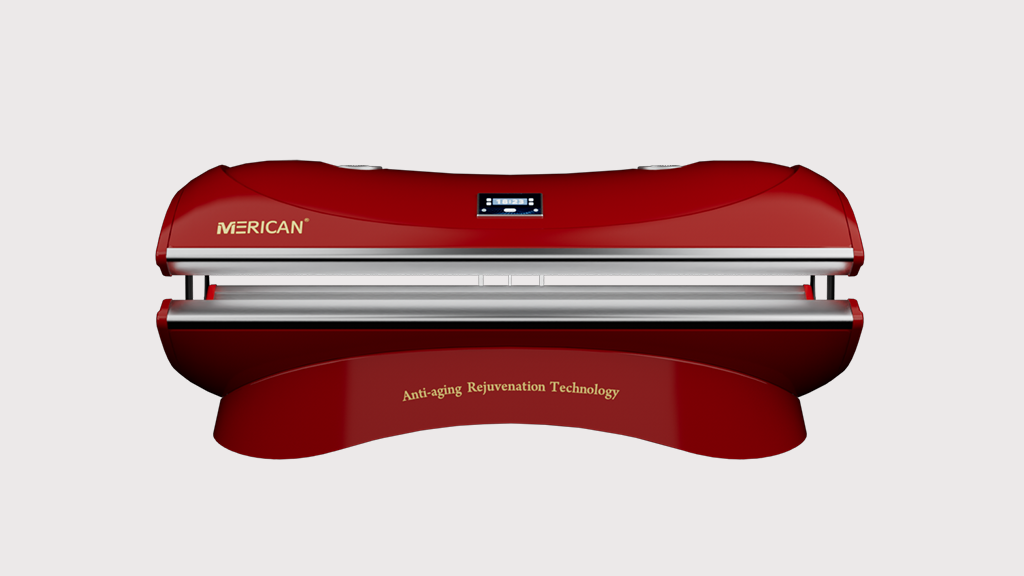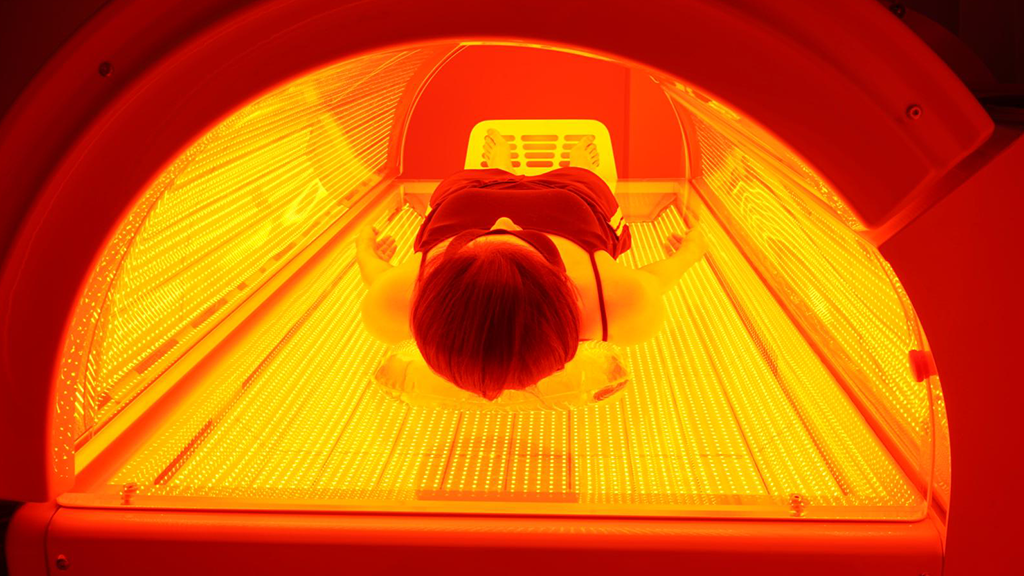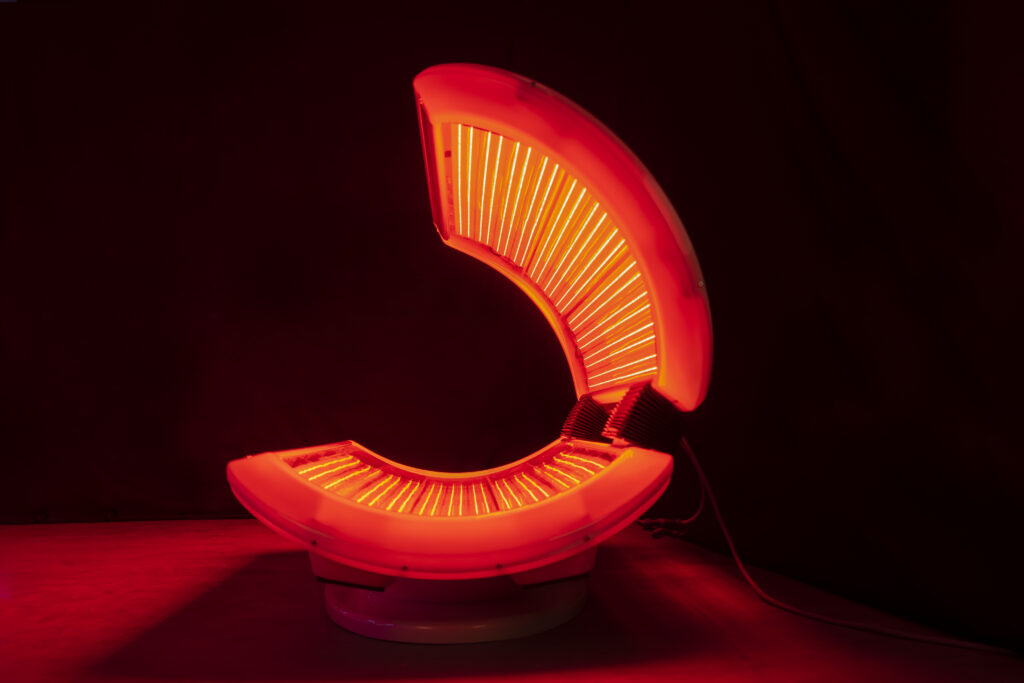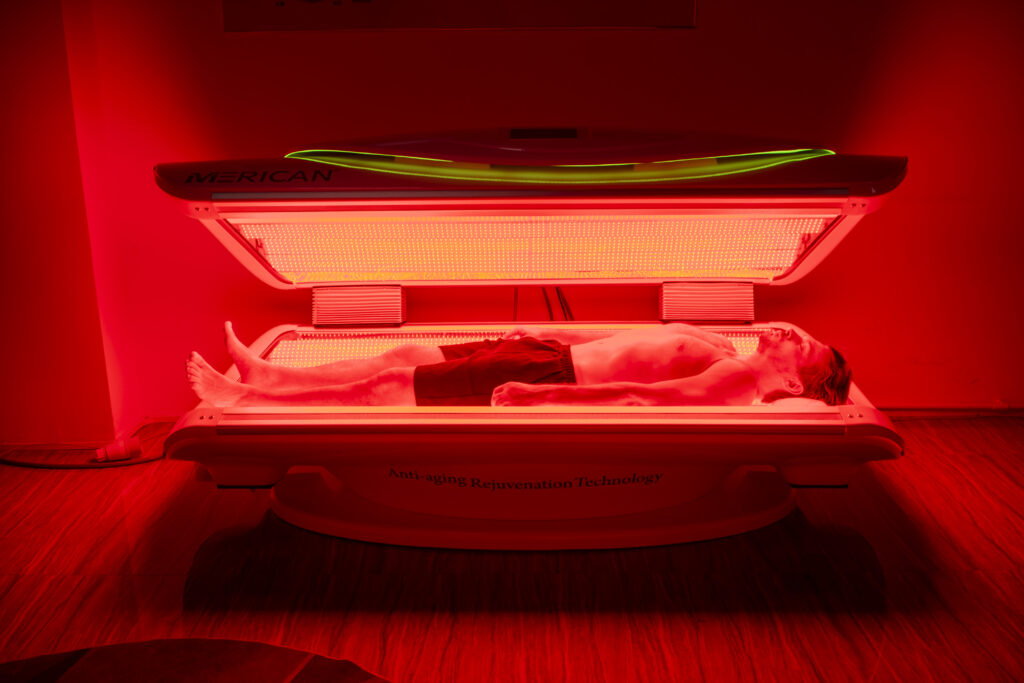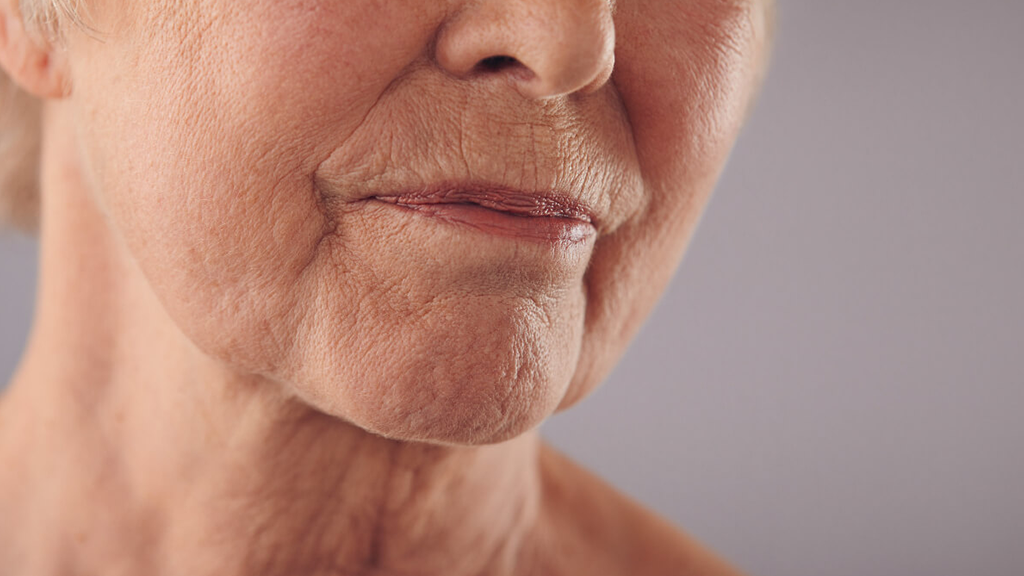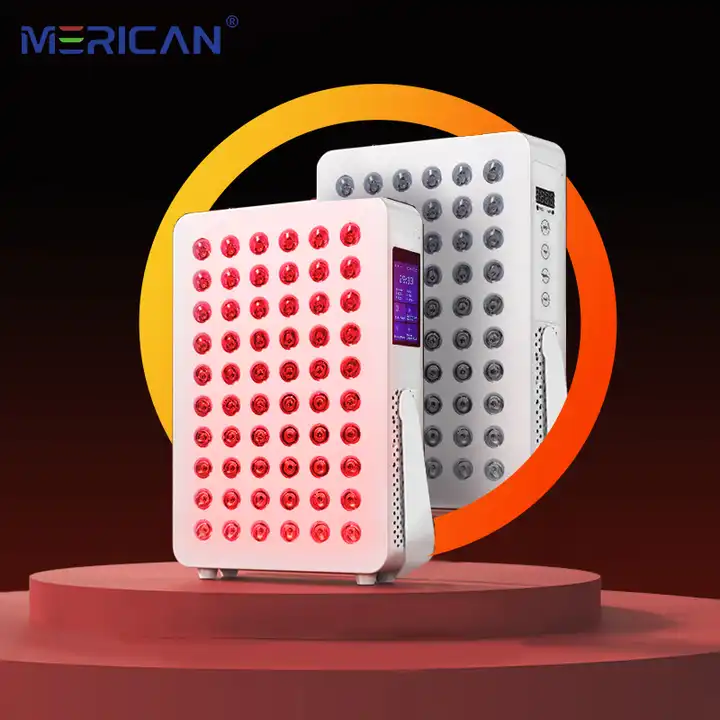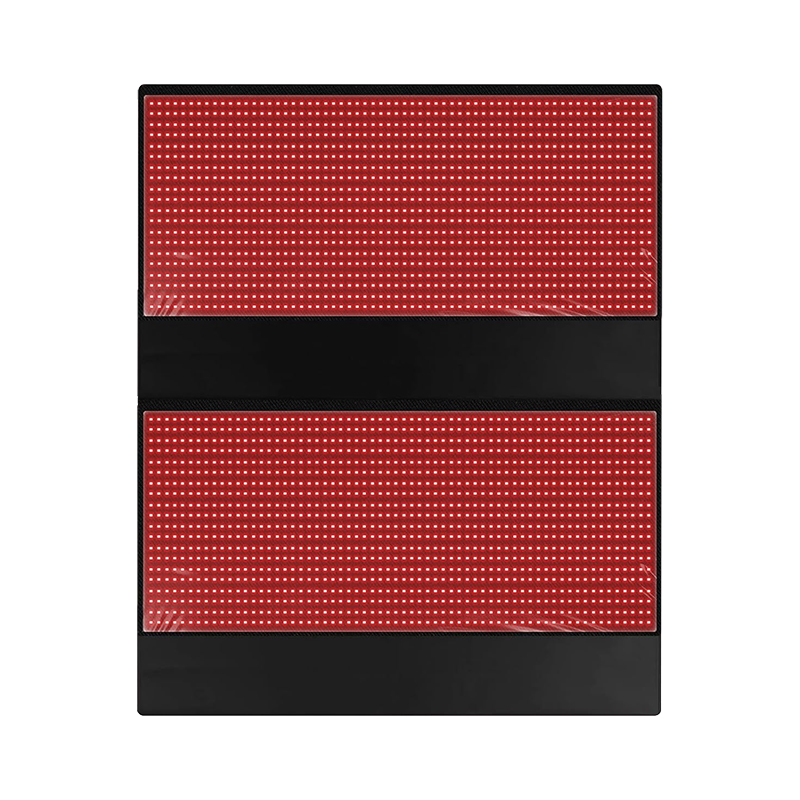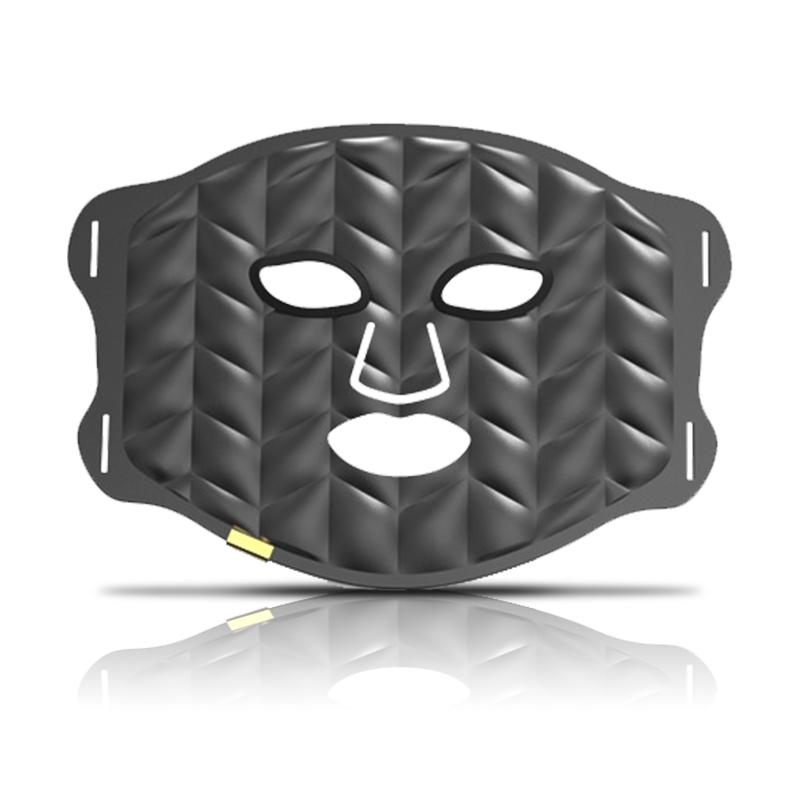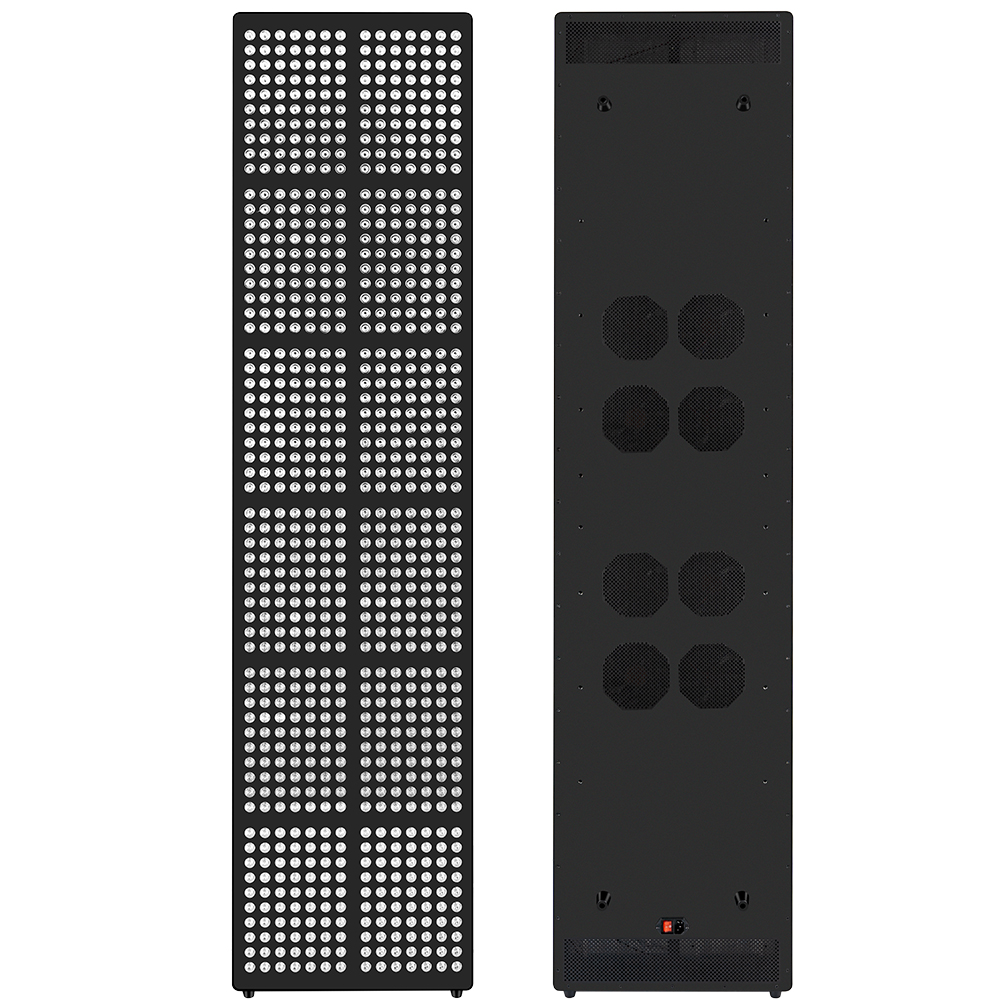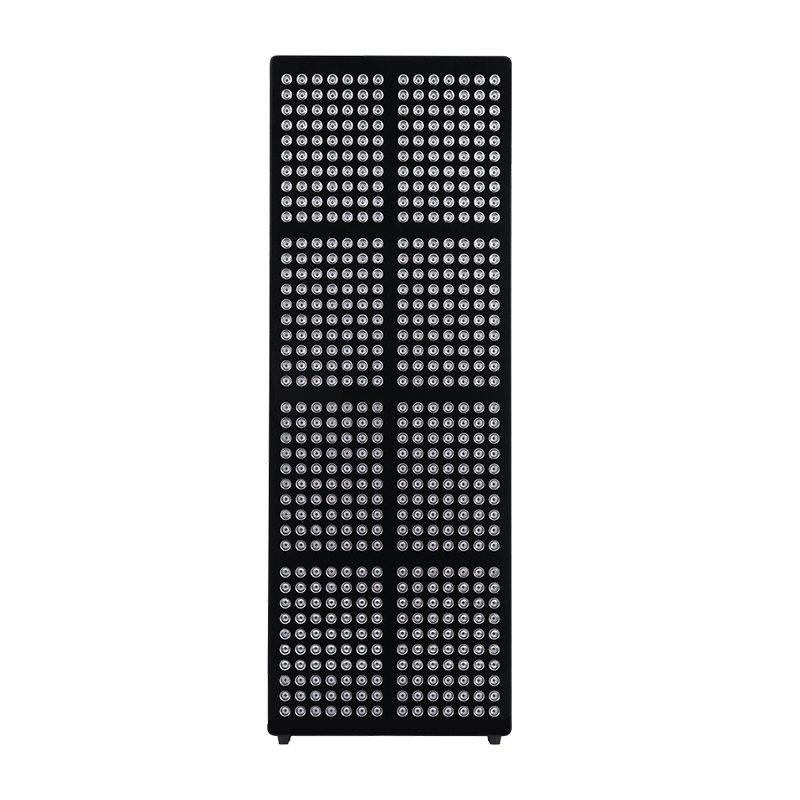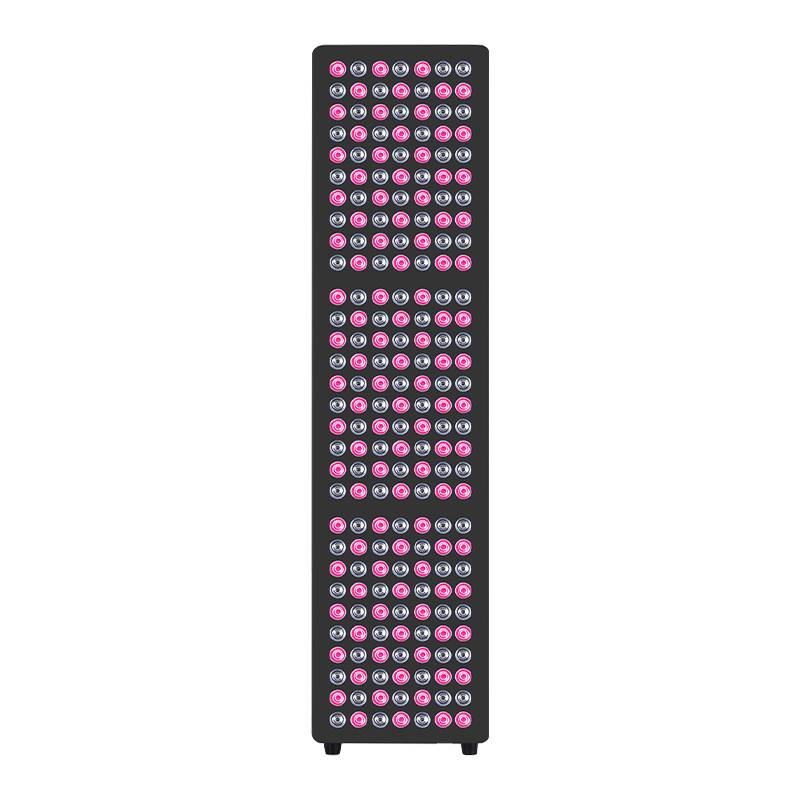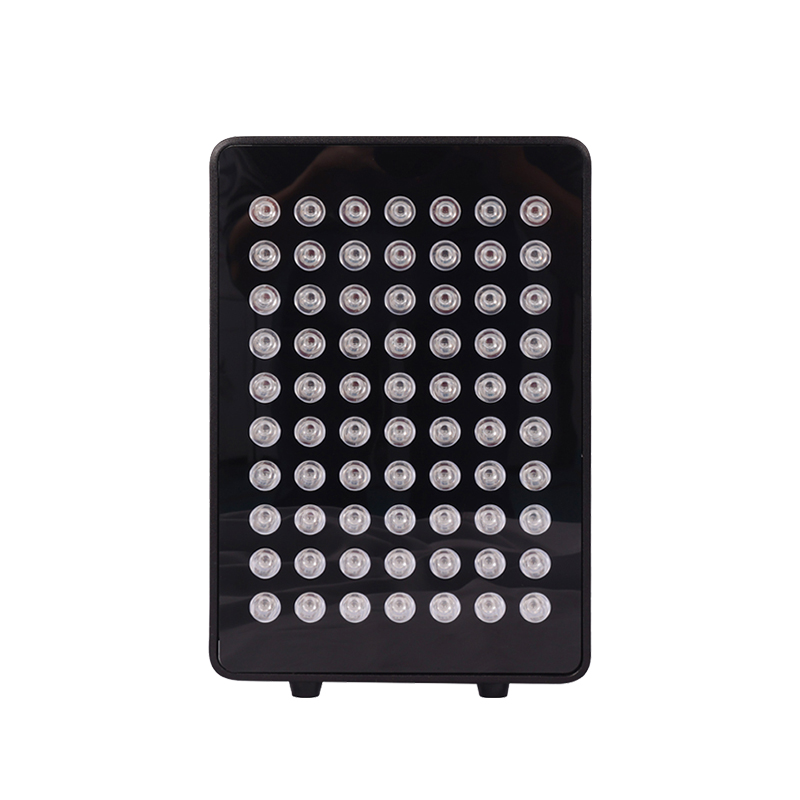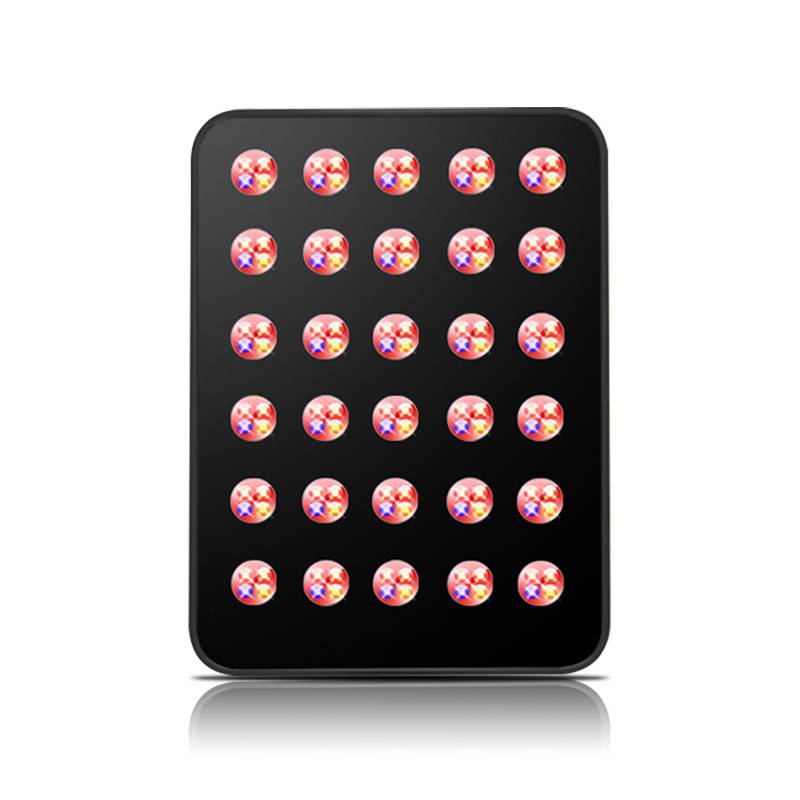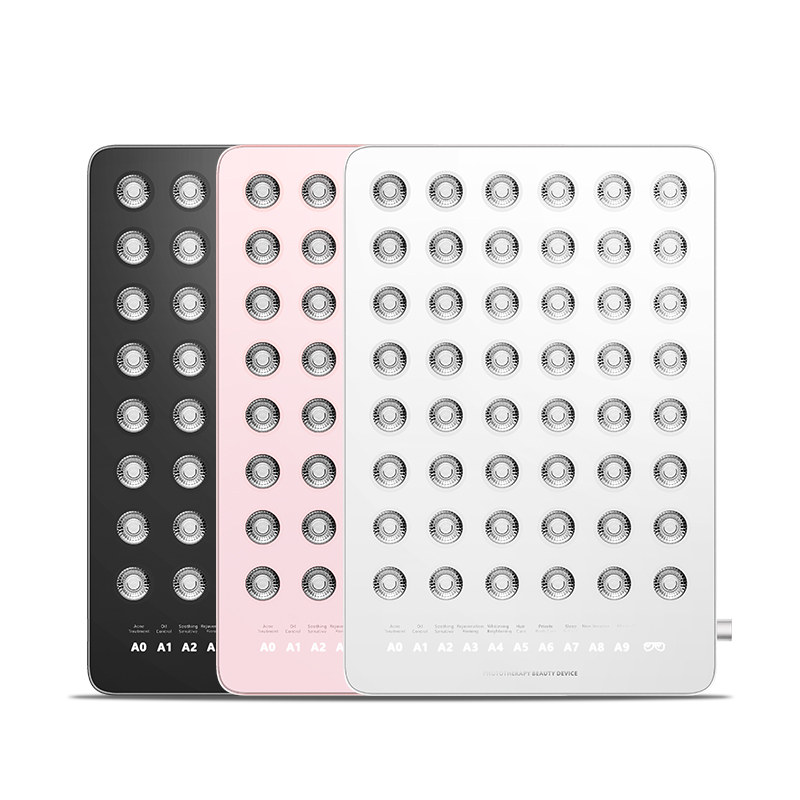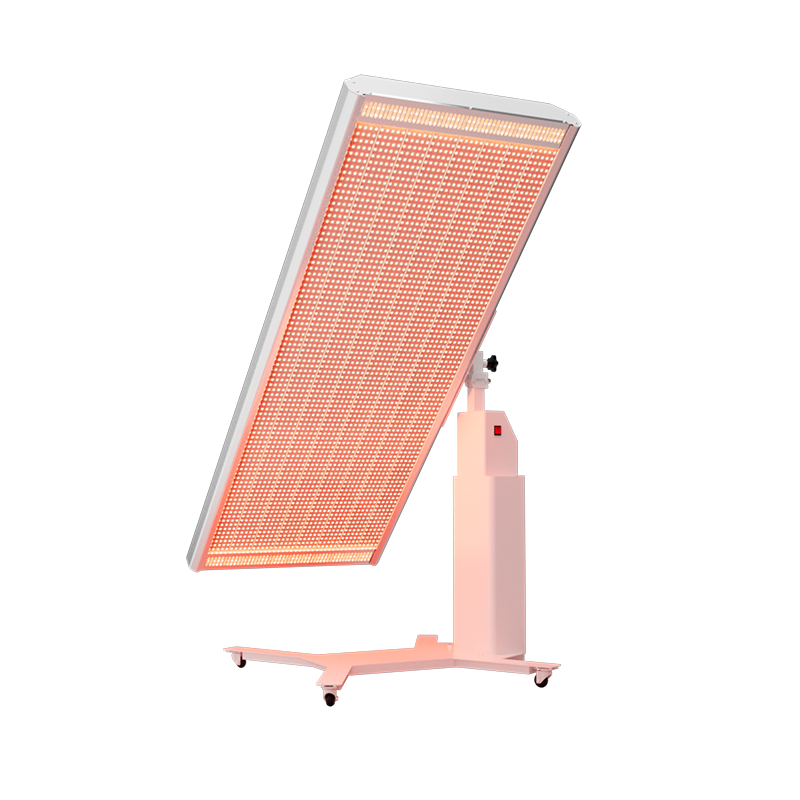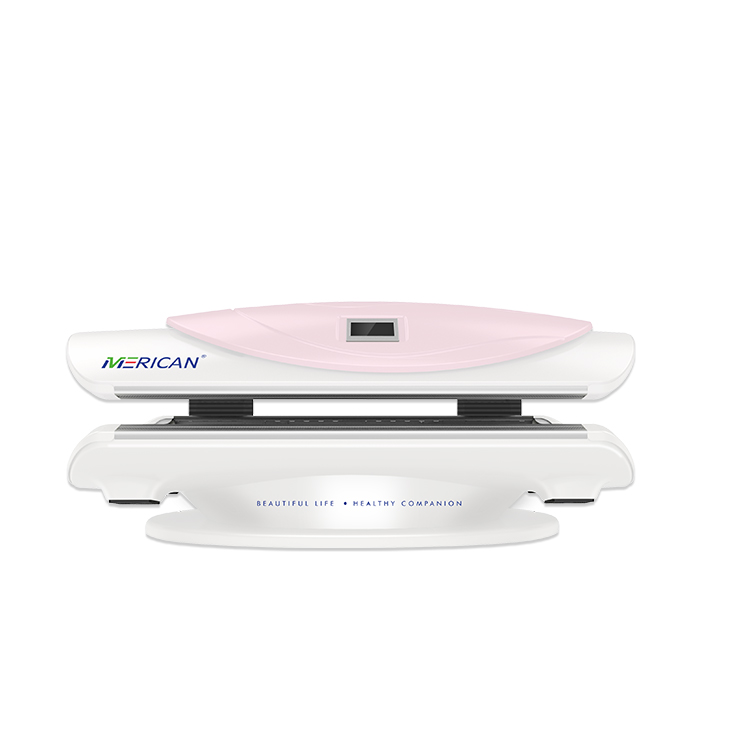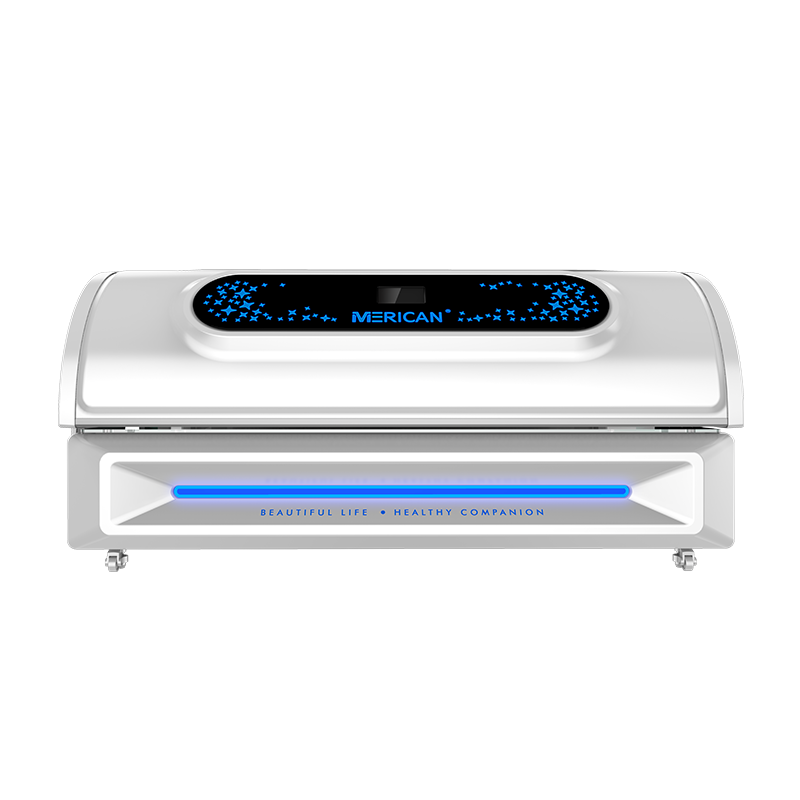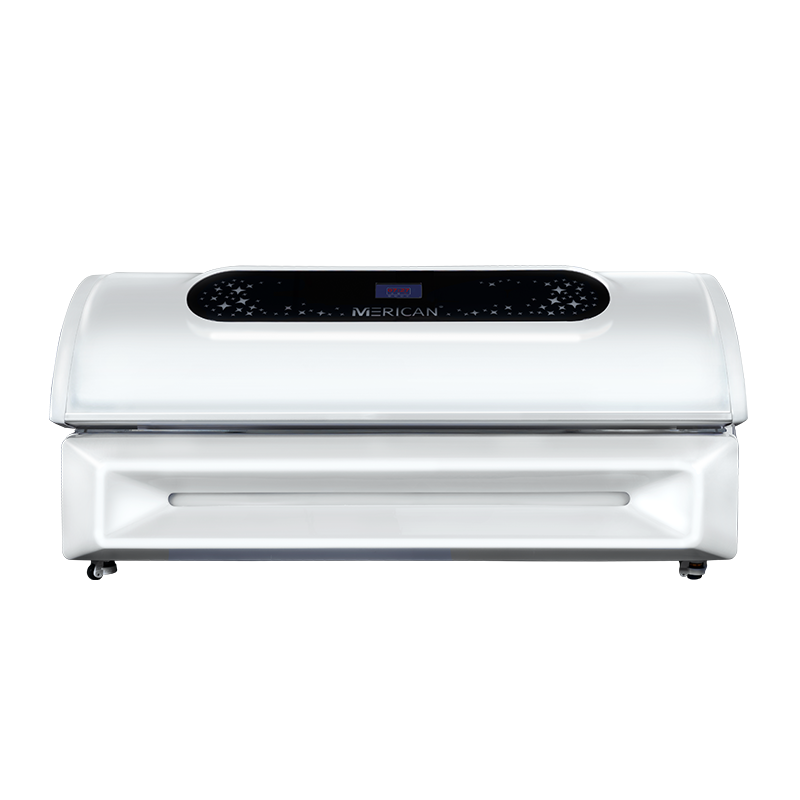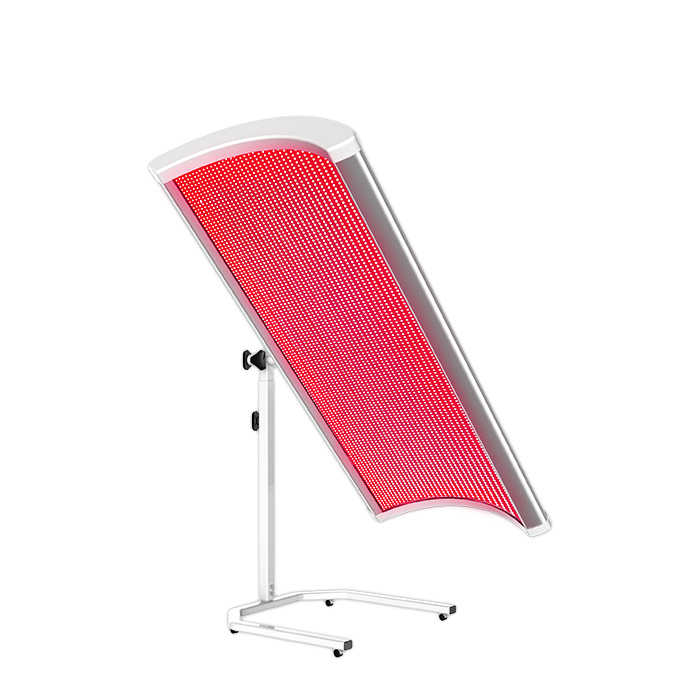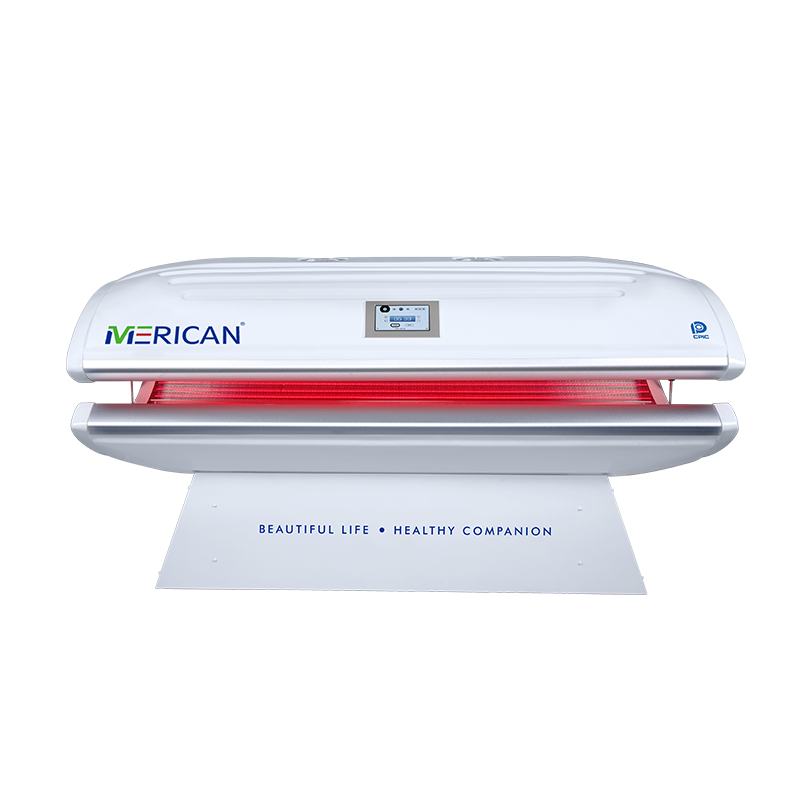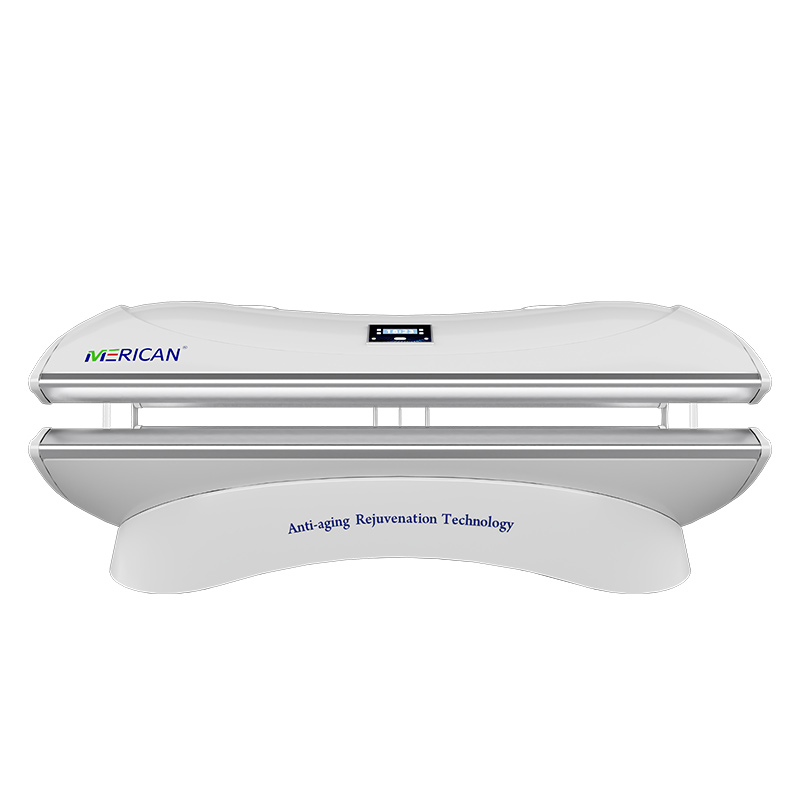Thérapie par la lumière rouge (RLT)—également appelée thérapie au laser de faible intensité (LLT) ou photobiomodulation (PBM)- est passée des cliniques sportives d'élite et des laboratoires de dermatologie aux salles de bains à domicile et aux centres de bien-être du monde entier.
Les amateurs affirment qu'il lisse les rides, accélère la récupération musculaire, soulage la douleur chronique, aiguise la cognition, et calme même un esprit agité. Nous examinerons ce qui se passe réellement lorsque des longueurs d'onde spécifiques du rouge (≈620-660 nm) et lumière proche infrarouge (≈810-850 nm) baignez vos mouchoirs.
À la fin, vous serez en mesure de choisir les appareils appropriés et de concevoir des séances qui correspondent à vos objectifs, qu'il s'agisse d'une peau éclatante, réduction des douleurs articulaires, ou tout simplement moins de stress à la fin d'une journée bien remplie.
Photobiomodulation 101: De la NASA à votre table de nuit
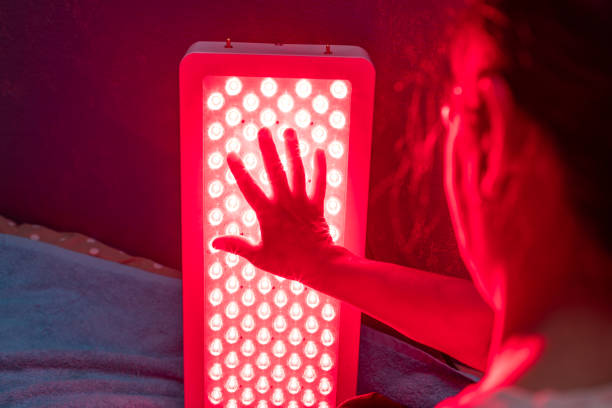
Une brève histoire
- Racines de l’ère spatiale
À la fin des années 1980, Des chercheurs de la NASA ont remarqué que les LED rouges accéléraient la cicatrisation des plantes et des astronautes exposés à des blessures en microgravité.. Cette découverte fortuite a éveillé la curiosité médicale.
- Évolution de la terminologie
Les scientifiques ont inventé thérapie au laser de faible intensité dans les années 90, mais parce que les LED, et pas seulement les lasers, produisent des longueurs d'onde thérapeutiques, le terme plus large photobiomodulation (photo = lumière, bio = vie, modulation = changement) gagné du terrain.
- Jalons réglementaires
Le premier dispositif PBM approuvé par la FDA pour les douleurs musculo-squelettiques est arrivé en 2002. Depuis lors, les agences ont autorisé des dispositifs de niche pour l'alopécie androgénique, tendinopathie, et réduction des rides.
Paramètres optiques clés
| Paramètre | Gamme bien-être typique | Pourquoi ça compte |
| Longueur d'onde (je) | 620-660 nm (rouge), 810-850 nm (Nir) | Dicte la profondeur de pénétration des tissus et quels chromophores absorbent l’énergie. |
| Maîtrise (J/cm²) | 4–60 J/cm² | Énergie totale fournie : un rendement trop faible n'entraîne aucun effet, trop élevé peut inhiber les cellules. |
| Densité de puissance (MW / CM²) | 10–200 mW/cm² | Densité plus élevée = sessions plus courtes; très haute densité risques chaleur. |
| Pouls vs. Continu | De nombreux panneaux sont continus; quelques impulsions à 10-1 000 Hz | Les pulsations peuvent imiter le déclenchement neuronal ou les modèles de libération d'oxyde nitrique; les preuves sont encore mitigées. |
Appareils grand public courants
Luminothérapie pour le visage (masques LED rigides ou flexibles)
- Optimisé pour les longueurs d'onde cosmétiques (principalement 630-660 nm)
- Durée de la séance: 10–20 minutes, 3–5× par semaine
Modulaire Panneaux LED
- Couvrir de plus grandes zones du corps; délivre à la fois du rouge et du NIR pour la récupération musculaire
- Souvent accroché aux portes ou utilisé dans des « cabines lumineuses » verticales
Appareils portables ou « torches »
- Faisceau concentré pour traitement localisé – tissu cicatriciel, articulations
Lits ou pods complets
- Expérience de style spa avec une irradiation uniforme de la tête aux pieds
Comment fonctionne la thérapie rouge?
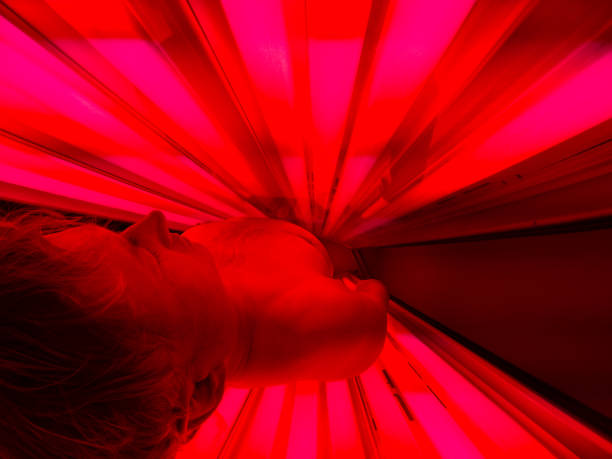
Cascade photon-biologie
- Absorption par les chromophores
Cytochrome-c oxydase (CcO) dans la chaîne respiratoire mitochondriale absorbe les photons rouges/NIR.
Oxyde nitrique (NON) peut être photodissocié de CcO, libérer l'enzyme pour accélérer le transport des électrons.
- Surtension ATP
Un flux d'électrons plus rapide élève les gradients de protons, stimuler la synthèse d’ATP – plus de « carburant » cellulaire.
- Espèces réactives de l'oxygène (Ros) comme signaux
Bénin, L'augmentation transitoire du ROS agit comme un messager, régulation positive des gènes antioxydants et réparateurs via des facteurs de transcription tels que NF-κB et Nrf2.
- Expression génétique & Facteurs de croissance
Production améliorée de collagène, Bdnf (facteur neurotrophique dérivé du cerveau), et VEGF (facteur de croissance endothélial vasculaire).
- Effets d’entraînement systémiques
La microcirculation améliorée fournit de l'oxygène et des nutriments.
Cytokines pro-inflammatoires réduites (TNF-α, IL-6).
Modulation de l'équilibre autonome, favorisant le « repos et la digestion » parasympathique.
Traverser le crâne: PBM axé sur le cerveau
Longueurs d'onde proche infrarouge (800–850 nm) pénétrer plusieurs centimètres à travers le cuir chevelu et le crâne. Photobiomodulation transcrânienne des études montrent:
- Amélioration du flux sanguin cérébral mesuré par IRMf et imagerie SPECT
- Fonction exécutive améliorée dans de petits essais sur les traumatismes crâniens et le trouble bipolaire
- Augmentations potentielles de l'oxygénation du cortex préfrontal et du BDNF, en corrélation avec une attention plus vive et une stabilisation de l'humeur
Existe-t-il une véritable science derrière la thérapie par la lumière rouge?
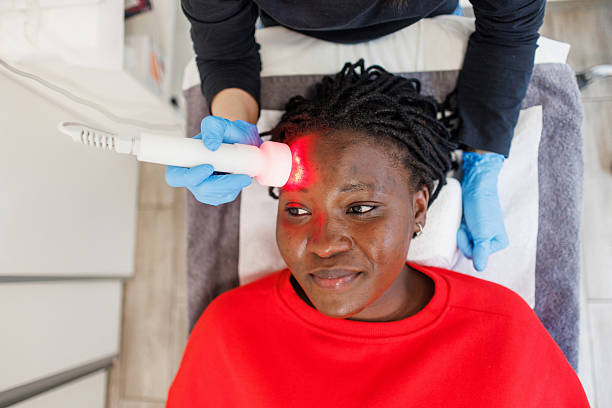
Dermatologie (Des preuves solides)
- Réduction des rides & remodelage du collagène
Essais contrôlés randomisés (ECR) montrer 25-50 % réduction de la profondeur des rides en 8 à 12 semaines.
Mécanisme: prolifération régulée positivement de l'ARNm du procollagène-I et des fibroblastes.
- Amélioration de l'acné
Rouge (630 nm) réduit P. acnes nombre de bactéries; Le NIR calme l'inflammation sébacée.
Douleur musculo-squelettique (Modéré à fort)
- Des méta-analyses révèlent un soulagement significatif de la douleur dans l'arthrose, tendinopathie, et lombalgie vs. fausse lumière.
- Réduction de la consommation d'AINS signalée chez les patients orthopédiques postopératoires.
Guérison des plaies & Remodelage des cicatrices (Modéré)
- Fermeture épithéliale accélérée dans les ulcères diabétiques et les brûlures.
- Des études animales démontrent un alignement plus rapide du collagène et une récupération de la résistance à la traction.
Avantages pour la santé mentale de la thérapie par la lumière rouge (Prometteur, Émergent)
- La PBM transcrânienne a amélioré l'humeur et la vitesse de traitement cognitif dans de petits essais sur le trouble dépressif majeur et le trouble bipolaire
- L'IRMf montre une connectivité réseau accrue en mode par défaut, ce qui peut sous-tendre une meilleure régulation émotionnelle.
- Les premiers rapports suggèrent que la thérapie par la lumière rouge contre le stress réduit le cortisol salivaire de 10 à 15 % après quatre semaines de séances trois fois par semaine. Des essais plus vastes sont en cours.
Métabolique & Marqueurs cardiovasculaires (Stade précoce)
- Des études sur des rongeurs indiquent une sensibilité améliorée à l’insuline; les données humaines restent préliminaires.
- Réductions de la pression artérielle (~5 mmHg) were logged in hypertensive cohorts after 8-week NIR limb exposure.
Weight Management & “Fat Loss” (Weak/Conflicting)
- Some panel vendors market PBM for slimming; small trials show modest waist-circumference changes, but confounders (caloric deficit, vibration plates) muddy causation.
- A recent Wall Street Journal feature warned consumers that hype often exceeds clinical proof
Comprehensive Benefit Breakdown
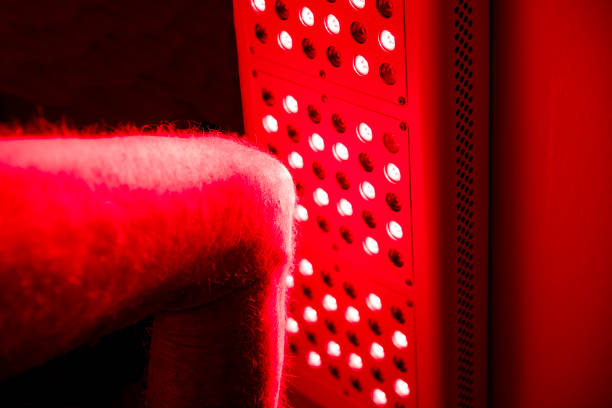
Peau & Aesthetics
- Acne-Prone Skin
Red/blue light masks reduce P. acnes and calm redness. Many users see fewer inflammatory breakouts within four weeks, consistent with clinical findings.
Muscles, Joints & Récupération
- Inflammation
RLT lowers COX-2 and prostaglandin E2 levels by up to 40%. Athletes report reduced soreness and faster recovery.
NIR light boosts SOX-9 expression in osteoarthritis models, supporting cartilage and slowing degeneration.
- Performance
Pre-exercise PBM primes mitochondria, improving peak torque and endurance in controlled cycling tests.
Neurological & Santé mentale
- Mood & Anxiété
Stimulation of the prefrontal cortex may rebalance alpha-wave activity. Anxiety scores dropped ~30% in early studies, suggesting potential alongside CBT or medication.
- Stress Response
PBM supports parasympathetic activity by reducing evening cortisol and heart-rate variability. Users often report deeper, sommeil plus reposant.
Dormir & Rythme circadien
- Mélatonine
Contrairement à la lumière bleue, red light may boost melatonin via pineal mitochondria, aiding sleep onset.
Cheveux & Santé du cuir chevelu
- Croissance des cheveux
RLT prolongs the hair growth phase and improves circulation, increasing shaft thickness and count in clinical trials on androgenic alopecia.
FAQ
Do dermatologists approve of red light therapy?
To achieve the best results for their patients, dermatologists often recommend red light therapy as a complementary treatment. Cela signifie qu'il est utilisé parallèlement aux thérapies conventionnelles dans le cadre d'un plan de traitement complet..
Y a-t-il un inconvénient à la thérapie par la lumière rouge?
Cependant, si les appareils de thérapie par la lumière rouge sont mal utilisés, comme être utilisé trop fréquemment ou non conformément aux instructions, il existe un risque d'irritation de la peau ou des yeux, surtout si une protection appropriée n'est pas utilisée. En plus, la sécurité à long terme des appareils de thérapie par la lumière rouge n'a pas encore été entièrement établie.
Qui ne peut pas utiliser la thérapie par la lumière rouge?
Voir la rubrique 5 pour une table complète. Bref, évitez ou obtenez l’autorisation d’un médecin si vous êtes enceinte, photosensible, prendre des médicaments photosensibilisants, avez un cancer de la peau actif, épilepsie incontrôlée, ou une chirurgie oculaire récente.
Existe-t-il une véritable science derrière la thérapie par la lumière rouge ??
Oui. Des milliers d’articles évalués par des pairs couvrent la dermatologie, douleur, neurologie, et médecine du sport. Les résultats dermatologiques et musculo-squelettiques sont les plus cohérents; les données sur le cerveau et le métabolisme sont prometteuses mais nécessitent des essais plus vastes. Des études de haute qualité utilisent des contrôles fictifs, longueurs d'onde définies, et mesures objectives des résultats.
Combien de temps vais-je voir les résultats?
- Visible changements cutanés: 4–6 semaines.
- Soulagement de la douleur: Certains utilisateurs se sentent mieux après 2 à 3 séances; des problèmes chroniques peuvent nécessiter 4+ semaines.
- Mood & changements de stress: des études pilotes montrent des améliorations après environ 8 à 10 séances axées sur le cerveau.
Conclusion
La thérapie par la lumière rouge illustre avec élégance un thème central de la médecine moderne: petit, les coups de pouce non chimiques peuvent entraîner des changements biologiques démesurés lorsqu’ils exploitent la propre machinerie de résilience du corps. De la production améliorée d’ATP à l’expression des gènes en aval, Les mécanismes du PBM sont de plus en plus clairs. Les preuves cliniques vont de bien établies (réduction des rides, douleurs articulaires) à émergent mais passionnant (Avantages pour la santé mentale de la thérapie par la lumière rouge, et thérapie par la lumière rouge pour le stress).
Encore, la lumière seule n'est pas magique. Longueur d'onde appropriée, dose, et la cohérence ne sont pas négociables, et les personnes photosensibles ou présentant certaines conditions médicales doivent s'abstenir ou consulter des professionnels.. Si vous abordez le PBM avec un scepticisme éclairé, des objectifs réalistes, et un suivi assidu, les photons peuvent devenir un outil pratique dans votre boîte à outils de longévité et de bien-être.

